#dentist in Cranston
Text
I'm surprised that with all the Breaking Bad and Seinfeld memes I've seen online that there hasn't been at least one big post yet bringing up how Bryan Cranston and Bob Odenkirk both had roles on Seinfeld
#bryan cranston specifically had a regular role as tim whatley - jerry's dentist#i mean. seinfeld aired for long enough that like pretty much everybody was on it at one point#but still#cookie.txt
5 notes
·
View notes
Video
Are you looking out for a dentist in Seton near Cranston? Our well-known dentist is offering you a full dental service which includes restorative, cosmetic, and much more. We have a dedicated dental team that follows the Alberta Free Guide on Dental Procedures. Book an appointment with us today and we also have flexible financing options available.
0 notes
Text
there’s a seinfeld episode where the bryan cranston dentist and his assistant fuck while jerry’s under the anesthesia for a filling
3 notes
·
View notes
Text
seinfeld side character men rated on hotness
1. hot guy from the garage
2. bryan cranston dentist
3. elaine's boyfriend tony
4. puddy
7 notes
·
View notes
Text
obsessed with brian cranston's dentist guy on seinfeld literally one of the funniest characters ever
0 notes
Note
AIUI, Burbank is even more a question mark than The Shadow is; we don't know if that's a personal name, surname, or nickname, we no nothing of his past, his personal life, or even (again, AIUI) his personality. Is that something that should be kept in adaptations, or ought he be developed more?
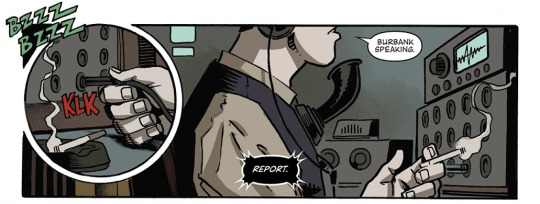
Both.
The thing about developing a mystery is that you still need to have something in place to purposefully obscure or slowly reveal. You still need to give your audience tidbits and information here and there that makes them want to learn more and find out what the answer is, even if they know it's never really happening, even if the answer couldn't possibly live up to the hype.
Twin Peaks was able to delay the mystery of Laura Palmer's murder for an entire season and more partially because Laura Palmer had such an rich, troubled inner life and turmoil, that we could gradually receive snippets of information regarding it every episode and still not know the whole story, so much so that, even after we learned who did it, there were still many, many stories to be told within Laura Palmer's life and the city. This holds true for The Shadow, and it holds true for Burbank.
Gibson successfully created intrigue regarding Burbank because, not only was Burbank a crucially important figure in The Shadow's organization and therefore someone we'd want to know more about, but because everytime Burbank showed up to play a substantial role, you could gleam something new about him. Burbank is a great example of staging in The Shadow pulps because his scenes are often written as if we were watching a movie where the head of our main character keeps being blocked from view, until it's revealed, and it doesn't really help us understand him much better than before, even though we've come to learn more about what he acts and looks like.
In fact, The Shadow even seems to be aware of this, such as in the scene below when the narration goes to great lenghts to obscure Burbank's face, even in a scene when there is literally no one around but Burbank and The Shadow. Why go through this much trouble to obscure Burbank from no one but the reader? Why not just refrain from describing what he looks like instead of making sure we can't even imagine what he looks like in our heads in the scene? What's the mystery over what's ostensibly just an average quiet-faced man? And so Burbank doesn't become just a mystery, but a tantalizing one.
The fellow's back was toward the light; since the elevator was dark, it was impossible to distinguish his features. When he helped The Shadow carry the boxes to an open apartment, the bulky objects came in front of the man's face. Since the apartment was dark, too, the features of this silent companion remained as concealed as The Shadow's own.
The fact pleased The Shadow. The less people who saw Burbank, the better - Voice of Death

For example, we do know where Burbank's name comes from, and potentially his first name. In both “The Shadow Laughs” and “The Case Of Congressman Coyd,” Burbank is referred to as “Mr. Burbank,” which indicates it's a last name. In The Death Giver, Burbank hands Harry a business card
At three fifteen, the stenographer entered and tendered Harry a card. It bore the name:
L. BURBANK
MOTION PICTURE OPERATOR
A later story specifically namedrops famous horticulturist Luther Burbank, and according to Will Murray, Walter Gibson did confirm to him personally that Burbank was named after Luther Burbank.

We know Burbank's main feature is that he's "quiet-faced" with a "soft, even-toned voice", and that characters can recognize Burbank by his voice even when his face is obscured, but his look isn't consistent. His sole appearence in a cover comes from The Lone Tiger, where he seems to be past his fifties and being semi-bald, but it's not how he looks in Edd Cartier's illustration where he's got a hairdo. Both seem to be somewhat based on Dr David Burbank, the New Hampshire dentist who founded the city. He's been said to be at least 40 once, and this in itself is at odds with some descriptions that place Burbank as younger than The Shadow and describe him as "a young man with a solemn look", which is more in line with how he tends to be depicted in comics, particularly the blonde man with the eyepiece designed by Michael Kaluta.

We know he was officially introduced after Harry Vincent and Claude Fellows, but that apparently he's known The Shadow for quite a while, as he (as Cranston) refers to Burbank as "an old friend" in his introduction (is he an old friend of Cranston as well?). Robert Sampson speculated that the two met in 1924 at a radio station, where as Rick Lai speculates that Burbank may have been recruited in an unrecorded adventure in Rio de Janeiro, mentioned in Gypsy Vengeance, that took place between the first and second novels.
We know that Burbank is at a rather unique position among the agents because he is maybe the most important figure in The Shadow's network, the main keeper of The Shadow's secrets, the one entrusted to run the organization on The Shadow's absence, the only one who can directly reach The Shadow in the Sanctum, and if anyone knows anything about whatever secrets there are in The Shadow's past, it's definitely him, but he's also the one we know the least about as a person, and contrary to the other agents, Burbank is often described in mechanized terms, which gives him a rather inhuman aura somewhat different than that of The Shadow's.
In a sense, Burbank was the mainspring of the machinery that The Shadow used in his warfare against crime.
As contact man, he kept in touch with all the active agents; there were times when he actually ran things, during The Shadow's absence. Tonight was one of those rare occasions when Burbank was needed on active duty.
Nevertheless, the human cogwheel had connected up a switchboard and had a short−wave radio set handy, so that he could continue his contact duties from this empty apartment - Voice of Death
When emergency demanded, Burbank served as he now was serving. Instead of making calls to the deserted sanctum, he was issuing orders in The Shadow's stead. - The Key
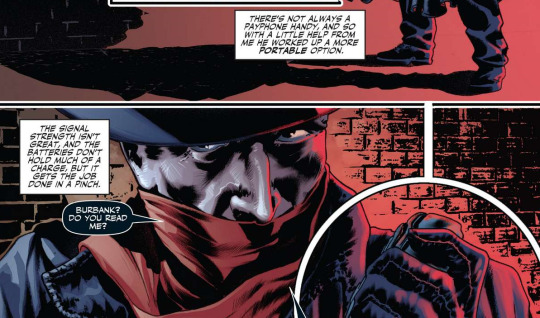
Everytime Burbank gets any sort of spotlight, we learn a little more about him, who he is, what he can't and can do. His methods, what he does to spend the time, some of the things he does for The Shadow outside of communications like planting recording devices in criminal hide-outs and devising or managing electrical devices and The Shadow's advanced technology (even if he doesn't fully understand it).
"Burbank began his own attempt to scale the wall. Ordinarily, his clutches would have been inadequate, and his toe holds were uncertain. But the wire was drawing upward under The Shadow's haul. It gave the needed support whenever Burbank floundered. The Shadow could actually sense his agent's progress by the varying strain upon the wire. At last, Burbank flopped over the roof edge like a landed fish" - Masters of Death
There were remarkable devices here. Burbank understood some of them, but the millionaire alone was familiar with all the equipment - Eyes of The Shadow
“To Burbank, long, lone vigils were nothing. He was not a man of action; he was one of endurance. Prompt, precise and always dependable, Burbank had served The Shadow well.“ - The Key
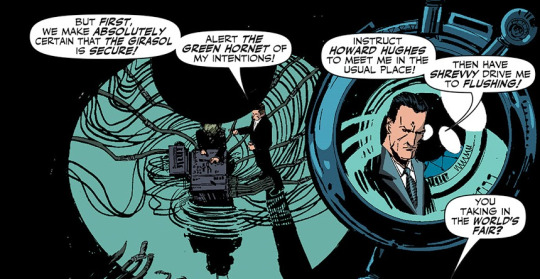
During his long hours of duty, he resorted to one methodical habit as he bided away the time. He always had a supply of chewing gum.” - The Killer
Burbank leaned back in his chair. His position was one of patient relaxation. While he awaited new telephone calls, his attitude was one of complete passivity. There was nothing excitable in the make-up of this man who sat with his back toward the light. Yet Burbank was a man of amazing endurance. In place of action, he exercised untiring vigilance. It was this quality that made him a most important factor in the affairs of that amazing personage known as The Shadow - The Killer

Burbank is, at once, the barrier between the agents (and by extension, us) and The Shadow, as well as the bridge that allows the agents (and us) to find and reach The Shadow.
And I do like it that Burbank's specifically said to not be cut for action, that he's not really a fighter or a marksman or even a super tech genius, on paper he's really just a guy who sits in a chair all day fiddling with radio equipment. But he is still cool and impressive by the standards of what matters most in The Shadow's world. He's patient and resourceful and vigilant and clever and trustworthy, and he's someone that The Shadow trusts more so than anyone else.
There was no sound of the door closing; no sound, indeed, to indicate that any person had moved in that direction. Yet Burbank knew, from experience, that his master, The Shadow, had departed, after giving him the sign that his vigil was ended.
Such word usually came from The Shadow’s sanctum. Tonight, being in the vicinity of Burbank’s present station, The Shadow had preferred to give his faithful agent fifteen or twenty minutes of extra respite by visiting him in person
Such was the way of The Shadow. Though none of his trusted operatives had ever seen his undisguised face; though his ways and actions were secret and mysterious to them; they received constant signs of The Shadow’s appreciation of their reliable cooperation - Death Triangle
In Suite 808, a figure was seated in front of the writing table. It was The Shadow, in his guise as Arnaud; Burbank was off duty, asleep in the other room.
The telephone buzzed; The Shadow answered it. He spoke in a quiet, methodical tone, a perfect imitation of Burbank's voice. Harry Vincent reported - The Case of Congressman Coyd

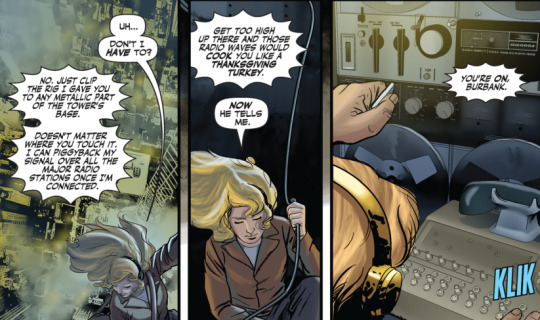
On one hand, I don't think the "mystery" of Burbank is ever going to be ruined, or should be ruined. But on the other hand, I definitely think there's a lot of room to explore more regarding what exactly is he as a person, as an agent, what kind of roles he plays, what is his connection to The Shadow or what relationship he has with other agents or other people he's meant to be in more direct contact with. I think it's a matter of balance.
There's a lot of room to work with particularly regarding how you could adapt Burbank into adaptations set in different time periods (not necessarily modern day), because with how communication technology had advanced beyond imagination, there's a lot of ways you could adapt or recontextualize Burbank, The Shadow's social network.
29 notes
·
View notes
Text
why does brian cranston play a dentist who fucks jerry while he's under anesthesia on seinfeld
7 notes
·
View notes
Text
Suicide risks and data
I can’t seem to post this in the replies, so I made a separate post in response to @transgun’s discussion on suicide risk for post-op trans people. My apologies for the delay, I’ve not been AWOL because I ‘want trans people to die’ and one lovely anon informed me, but because I’ve been too busy to give these information the attention it deserves.
As a general framework for my perspective, I think suicide is complicated. Teenagers, lesbians, dentists, middle-aged men, frail seniors - all have high rates of suicide, yet are very different people. It takes multiple sources and analysis to really pin down the causes and assess the most effective treatment and prevention strategies.
Additionally, I want to clarify that I believe people are free to do what they want with their own bodies, and that people should not face undue barriers to medical interventions that will ease their distress.
Generally speaking, people are resilient. We adapt to all kind of terrible decisions especially when those decisions are permanent. It’s a well known trick of human nature that helps us get on with our lives. If you know you’re stuck with something, you’re very motivated to feel positively about it, and if you need evidence about this just ask someone if they regret getting a tattoo.
Anyway, I’d imagine that most people would adapt to ineffective or even psychologically harmful surgical choices EXCEPT the group of people who suffer from dysphoria. This is a group that, by definition, haven’t gotten used to the bodies they were born with, much less their potential plastic surgery mistakes. That seems to me to be a high risk proposition, and in the face of trauma, dysmorphia, autism, depression, social conflict and a host of other mental health challenges that accompany most gender clinic patients, I’m concerned that entirely the wrong approach is being employed.
So, my question is whether physical transition successfully reduces suicide risk over the long-term. Significantly, the sources you’ve given me are whether ‘mental health’ is improved with transition. Fundamentally, we are asking different questions. If that’s all you need to know, you can save yourself lots of reading and stop here.
I’m being picky about the question for a reason. Read this comprehensive review of suicide among LGBT population (the article says LGBT but throws in the T rather randomly since all earlier research is LGB only). Despite 4 decades of self-reported data, one of the “knowledge gaps” identified is “Among the most pressing questions for future research is whether LGBT people are over-represented among suicide deaths, and if so, why” If you read the details of the many different studies in this review, you really understand how confusing it is to pin down. There are contradictory and counter-intuitive results. For example, some researchers found that loneliness and social isolation were significant factors - makes sense - except that married gay men still have significantly higher rates of suicide. When you look more closely, the social factors were significant in youths, so maybe there’s a crisis period of coming out? Well no, the elevated risk remained high across all age groups for LGBs. How do we make sense of this?
Maybe it’s the concurrent high rates of substance abuse, mood and anxiety disorders that are often noted (Bostwick et al., 2010; Cochran, Mays, & Sullivan, 2003; Cochran, Mays, Alegria, et al., 2007; Conron, Mimiaga, & Landers, 2010; Hughes, Szalacha, & McNair, 2010; Jorm, Korten, Rodgers, Jacomb, & Christensen, 2002; McCabe, Hughes, Bostwick, West, & Boyd, 2009). That would be a reasonable conclusion until some researchers discovered that women who only have female partners have lower rates of every mental disorder they studied than even in the general population (Bostwick et al., 2010). So when other studies find elevated rates of substance abuse in lesbian and bisexual women, it’s possible that most of that is actually concentrated in the bisexual women, or at least, women who date men (King et al., 2008). The evidence from the Danish registries (Mathy, Cochran, et al., 2009) suggest significantly higher suicide rates among anyone who has a history of a domestic partnerships with men - which maybe says more about men than the people who date them.
Maybe ‘coming out’ age is a factor. There is some evidence that suicide attempts are broadly distributed among ages in LGB populations than the general population (where it’s concentrated in youth). (D'Augelli, Grossman, Hershberger, & O'Connell, 2001). It may be more closely linked to the ages at which lesbian women (Hughes, 2003) and gay men (Paul et al., 2002) recognize and disclose their sexual orientation to others than to chronological age. Conversely, suicide attempts appear to occur more frequently among transgender adolescents and young adults than among older age groups (Xavier et al., 2007). Transgender youth have reported parental rejection to be a particular stressor (Grossman & D'Augelli, 2008). Are we misdirecting our efforts to a medical process rather than focusing on repairing the parental and peer relationships a young trans person faces during the initial ‘coming out’ phase? Additionally, how do we assess the long-term impact of any suicide prevention strategies since some natural reduction in suicide rate may occur with aging?
Back to the question of whether transition reduces suicide rates. There are many questions that need to be answered that I would hope for in a study. I don’t want to pick apart each study, it’s petty to do so since no study can answer every question, but the body of evidence should give a comprehensive and generally congruent set of answers. Answering my question would involve some core data:
1. How high is the suicide rate in the first place? Observed baseline suicide rates need to be compared to post-op observed suicide rates. Strictly speaking, any other data is of lesser value. Self-reported suicide attempts have been consistently reported by LGB populations over 4 decades of research, (DuRant, Krowchuk, & Sinal, 1998; Falkner & Cranston, 1998; Garofalo, Wolf, Kessel, et al., 1998; Garofalo, Wolf, Winssow, et al., 1999; Remafedi, 2002; Russell & Joyner, 2001), yet studies that analysed data of actual suicides, trying to find out their sexual orientation after the fact, found no evidence of disproportionate rates of suicide. (Rich, Fowler, Young, & Blenkush, 1986), (Shaffer, Fisher, Hicks, Parides, & Gould, 1995) and (Renaud, Berlim, Begolli, McGirr, & Turecki, 2010). Similarly, despite consistent self-reports of alarmingly high suicide attempts in trans populations, the Tavistock clinic reports its actual suicide rate of 1% - which is indeed high for the general population, but average for a clinical population seeking mental health treatment.
There’s an significant problem evident here. If you begin in the clinic, all the data that follows is limited to this population. There’s no comparable population found ‘in the wild’ where we can compare outcomes with the general public. A medical process necessitates medical intervention, making this data fundamentally different than studying a LGB population that doesn’t need or want medical intervention.
There’s no shortage of evidence of post-clinical risks for trans people. One clinical study reported a disproportionate number of suicide deaths among Dutch transsexual women and men receiving hormone therapy, compared to the general population (van Kesteren et al., 1997). Another international review of studies that followed over 2,000 persons in 13 countries who had undergone gender reassignment surgery identified 16 possible suicide deaths (Pfäfflin & Junge, 1998). That’s a rate of 800 suicides for every 100,000 post-surgery transsexuals. (by contrast, the suicide rate for the overall U.S. population is 11.5 suicides per 100,000 people). But what would it have been without intervention? It’s from 1998, is it relevant? Do trans people who don’t seek medical help do better or worse?
2. When we assess medical transition’s effectiveness, what are we comparing it to? Are we using a control group or placebo or double-blind studies? Are we comparing it to an alternative therapy? To ‘watchful waiting?’ To decide what’s best, what options are on the table?
3. How long is the follow-up timeline? Again, we need to know the original risk pattern to know if the intervention has been successful. A short-term reduction in risk that is erased in 5 years is a temporary benefit for a permanent procedure.
4. Who is a candidate for transition? This is a key issue with many older studies where the pre-op process was rigid and rigorous and the transsexual population significantly different than the one today. How can we compare whether an effective or ineffective outcome of a ‘sex change’ on a group of transsexual gay men in 1975 is related to decisions made to have hormone-only treatment on a ‘transmasculine’ teenage female in 2018? Is a non-op trans person likely to suffer increased suicide risk by not transitioning? Should transition be recommended or even required for trans patients, whether they request it or not?
5. Who is trans? I mean, if we’re going to study the effectivenes of a procedure on a population, we need to define both the procedure and the population. Looking at long-term data, this is a huge problem. For example, if you read Mathy, 2002b, you’ll notice that transgender respondents had a higher rate of reported suicide attempts than any group except homosexual females.
You can probably guess my suspicion than in 2018, a large portion of those gender non-conforming homosexual females now identify as non-binary, transmasculine etc. Female transsexuals were very rare in the 1970s, none of the early data addresses the risks to this population, who now make up 2/3 of gender clinic patients. (Clements-Nolle, Marx, Guzman, & Katz, 2001) found that 65% of female-to-male respondents identified as ‘gay, lesbian, or bisexual’. It’s hard to tell if that even means same-sex attracted, but I’m going to guess it does. When we say we are treating trans people, or lesbians, or lesbian trans people, who are we actually talking about when we compare data over time?
To address the studies you’ve cited, the first (2014) notes that “A marked reduction in psychopathology occurs during the process of sex reassignment therapy” which is promising but doesn’t meet any of these 3 criteria above. It doesn’t satisfy me, although it’s fine if it satisfies you.
The 2015 study is very promising and has a good timespan. However, it doesn’t have the numbers to tease out which factors affected improved mental health (subjects socially transitioned, had surgery, got counselling, resolved conflicts with their families etc over the course of time), making it difficult to pinpoint physical treatment as a cause of mental health improvement. Also, it’s a self-report study... not suicide data.
The next 4 studies show improvement on a variety of health scales but, again, that may answer your questions but it doesn’t answer mine.
I do want to address the study on regret. Very few detransitioners or desisters would meet the criteria of this study. Making a ‘regret application’ involved taking the step to reverse your legal ID to your original sex. Post surgery, regardless of how you felt about the outcome, few people would be motivated to pursue such an action. It’s interesting but not a good representation of the concept of regret. One of the studies from the ‘70 studies on transition’ you linked to notes “None of the 61 homosexual females or 36 homosexual males consciously regretted surgery, compared to 4 of the 14 heterosexual males: a significant difference.” More than anything, this highlights the need to find specific answers for specific questions.
Lastly, I’m just annoyed with Dhejne at this point. It’s like she’s vagueposting on her own damn research, but that’s not the same as publishing a peer-reviewed study. The phrasing about the later cohort’s suicide risk not being statistically significant could mean a lot of things. It could be a smaller cohort, studied over a shorter time span when the rise in suicide risk increased over time. Who knows? It’s not clear. The main caveat to notice in her original publication is that it was not intended to assess whether transition was effective at treating dysphoria, to which I say... why the hell not? She’s head of a gender clinic - doesn’t she want to know? And yet the conclusion in the paper is that the data “suggest that sex reassignment, although alleviating gender dysphoria, may not suffice as treatment for transsexualism”, which is.. tepid? Unclear? Just, why? But okay, let’s ignore absolutely all of her data, statements and so on until she publishes otherwise, or retracts her current statements, or clarifies her data. It’s not the only or best study on this population, and doesn’t deserve the attention it gets.
36 notes
·
View notes
Photo
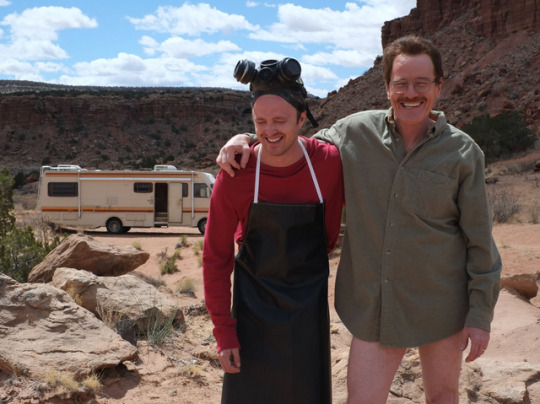



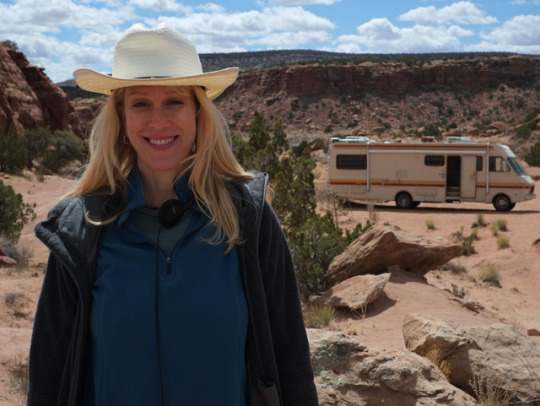


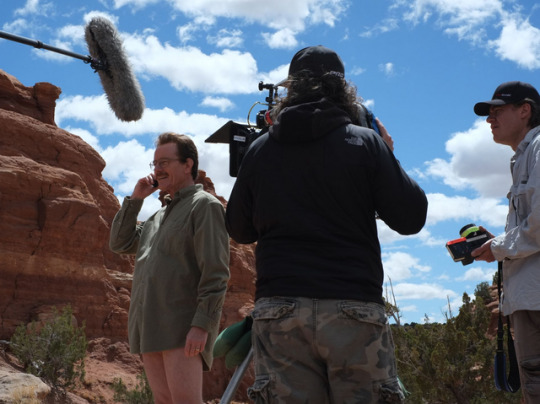
USA Today:
'Breaking Bad' turns 10: Stars reminisce about the final day, with exclusive on-set photos
If you step onto a set with Bryan Cranston, you'd best tread lightly.
On April 3, 2013, the six-time Emmy winner clocked his last day of work on AMC's Breaking Bad, which premiered 10 years ago this week, and cemented his status as one of TV's greatest anti-heroes with his portrayal of chemistry-teacher-turned-drug-kingpin Walter White.
Creator Vince Gilligan wanted the last day of shooting in Albuquerque to be special, so he decided to end with a flashback scene* of Walt and his protégé Jesse Pinkman's (Aaron Paul) first meth cookout in a makeshift RV lab.The scene, a callback to the pilot episode, was re-created for "Ozymandias," the third-to-last of the series.
Dressed in Walt's iconic apron and tighty-whities, Cranston saw how emotional Paul was on set that day and wanted to cheer him up. So, as they were shooting one of their final takes, he jokingly dropped his underpants and exposed his butt.
"We kind of went out the same way we went in: having fun, keeping it light," Cranston recalls. "I would often try to crack him up throughout the show. He was really dreading that last day, and it was nice to see him have a good moment."
Adds Paul: "I thought, 'Wow, I am going to miss this show and all of these beautiful people.' I miss his (butt) every single day."
Ceding directing duties for "Ozymandias" to The Last Jedi's Rian Johnson, Gilligan was free to wander around the remote desert set and shoot behind-the-scenes photos, which he shared exclusively with USA TODAY.
"It was a very emotional day, but a perfect last day, because we ended up where we started off," Gilligan says. "We were re-creating a time and place that existed in the pilot, 62 episodes prior, and everyone was in a really good mood, but bittersweet as well."
Cranston prepared for the occasion by inviting Paul over for dinner to read their final script.
"It marked a completion of a journey," Cranston says. But "ironically, I don't miss playing that character. I was so satisfied with the whole journey that, while it remains the most rewarding experience of my career, I don't really miss playing Walter White — I think because it was so complete."
The actors commemorated their time together by hiring a tattoo artist for the wrap party, where both got inked: Paul with the words "No half measures" (a line from the show by Jonathan Banks' Mike Ehrmantraut) on his bicep; and Cranston with the show's logo (the periodic table symbols of "Br" and "Ba") inside his right-hand ring finger.
"I hadn't thought about (the design) until I was driving to the party and realized the finality of the situation," Cranston says. "I look at it often, and it makes me smile every time I see it."
The actor, previously best known for playing Jerry's dentist on Seinfeld and a bumbling dad on Malcolm in the Middle, credits the show's popularity to Netflix. Spurred in part by critical raves and 16 Emmy wins, new fans caught up with the drama throughout its run and led modest ratings to spike in its final seasons.
"We were very fortunate to be that first binge-able show," Cranston says. "And once you give the audience a shot of Breaking Bad, they become addicted and had to see it through."
Bad's format lent itself to life beyond a typical network run, Gilligan says. "Breaking Bad was such a hyper-serialized show that on a typical network schedule, having that be the only way the show got out there, it might've failed. But in a world where people were able to catch up and consume episodes like potato chips, suddenly a show like this was able to work."
As for anything he might've done differently in retrospect, Gilligan has only one regret.
"I was watching an old episode the other night, and it really does irk me: Jesse's teeth were too perfect," he says, laughing. "Aaron Paul has an absolutely perfect pair of choppers in real life, and we never gunked them up or made him look like he had missing teeth. I don't know how you get beaten to a pulp that many times and smoke that much meth and not have your teeth look worse for wear."
#vince gilligan#breaking bad#BrBa#moira walley-beckett#moira walley beckett#ozymandias#BrBa 10 year anniversary#VINCE *cough jenn carroll cough* IS TAKING OVER BCS's instagram in like an hour btw!!!#*i think we know vince ''decided'' on ozymandias' teaser last bc of cranston's facial hair and hair-hair... not just for nostalgia rt?#rian johnson#cranston#aaron paul#usa today
6 notes
·
View notes
Text
Just got back from Power Rangers (2017) and Im Yes. "Boyfriend trouble?" "...Yeah. Boyfriend trouble" "...Girlfriend trouble?" ZACK YOU SWEET OPEN MINDED BOY Also Jason's dad probably called him a 'screw up' because that sounded pretty repeated to me Please protect all versions of Billy Cranston, whether movie version or 90's. THE WAY HE CLAPS WHEN EXCITED WAS SO PURE. Rita Repulsa was also FUCKING TERRIFYING. Reminder Rita is not a dentist. Sequels are coming. I can feel it. But how tf would Tommy even appear without the green power coin tho. Anyways I'm dead. 10/10.
602 notes
·
View notes
Photo

Bryan Cranston appeared on Seinfeld in 1994.
Role: Tim Whatley - Jerry’s dentist, who invites Elaine, George and Kramer to his Thanksgiving party and leaves Jerry uncertain whether he's been invited as well after telling Elaine ”Why would Jerry bring anything?”
♦♦ Season 6, Episode 8 - ”The Mom & Pop Store” ♦♦
2 notes
·
View notes
Text
A Life in Parts Downloadable Audio Books Free

Get now >> A Life in Parts Downloadable Audio Books Free
A Life in Parts Downloadable Audio Books Free
A poignant, intimate, funny, inspiring memoir—both a coming-of-age story and a meditation on creativity, devotion, and craft—from Bryan Cranston, beloved and acclaimed star of one of history’s most successful TV shows, Breaking Bad.
Bryan Cranston landed his first role at seven, when his father, a struggling actor and director, cast him in a United Way commercial. Soon, Bryan was haunting the local movie theater, memorizing and reenacting favorite scenes with his older brother. Acting was clearly the boy’s destiny—until one day his father disappeared. Suddenly, destiny took a back seat to survival.
Seeking something more stable, perhaps subconsciously trying to distance himself from his absent father, Cranston decided on a career in law enforcement. But then, a young man on a classic cross-country motorcycle trip, Cranston one day found himself stranded at a rest area in the Blue Ridge Mountains. To pass the time he read a tattered copy of Hedda Gabler, and in a flash he found himself face-to-face once again with his original calling. Suddenly he thought: This was what he wanted to do, what he would do, with the rest of his life. Act.
In his riveting memoir, A Life in Parts, Cranston traces his zigzag journey from his chaotic childhood to his dramatic epiphany, and beyond, to mega-stardom and a cult-like following, by vividly revisiting the many parts he’s played, on camera (astronaut, dentist, detective, candy bar spokesperson, President of the United States, etc.) and off (paperboy, farmhand, security guard, dating consultant, murder suspect, dock loader, son, brother, lover, husband, father). With great humor, and much humility, Cranston chronicles his unlikely rise from a soap opera regular, trying to learn the ropes and the politics of show business on the fly, to a recurring spot as Tim Whatley on Seinfeld, finding himself an indelible part of popular culture. He recalls his run as the well-meaning goofball, Hal, on Malcolm in the Middle, proving to writers and fans that he was willing to do anything, anything, for a laugh, and he gives a bracing account of his run on Broadway as President Lyndon Johnson, pushing himself to the limit as he prepared, physically and mentally, for a tour de force that would win him a Tony, to go along with his four Emmys.
Of course, Cranston dives deep into the grittiest, most fascinating details of his greatest role, explaining how he searched inward for the personal darkness that would help him create one of the most riveting performances ever captured on screen: Walter White, chemistry teacher turned drug kingpin.
Discussing his failures as few men do, describing his work as few actors can, Cranston has much to say about innate talent, its benefits, challenges, and proper maintenance, but ultimately A Life in Parts is about the necessity and transformative power of hard work.
A Life in Parts Downloadable Audio Books Free
0 notes
Text
Candlelight vigil held for beloved Saint John dentist
A vigil is being held in Saint John to remember beloved dentist, Cindy McCormick, and shed light on domestic violence.
McCormick was murdered two weeks ago at Lake Louise and her partner Bob Kaine is the only suspect, but he’s also dead.
She’s described as funny and fearless by friends and colleagues - they say the situation has been difficult to come to terms with.
“Because of this, we really need to stop being silent,” says McCormick’s friend, Erica Grutzner. “We need to talk to our friends.”
“It’s unbelievable still that it’s happened,” says another friend, Charlotte Lammers. “I can’t even imagine.”
Police in Alberta say McCormick’s body was found in a Chateau Lake Louise hotel room.
Across the border in British Columbia, officers found the body of her partner, 52-year-old Bob Kaine, who was a firefighter in Saint John.
Saturday afternoon, McCormick’s friends gathered firewood to prepare for the evening vigil on Sand Cove Road.
Her friends say they will be acknowledging the way in which she died by having someone speak about domestic violence.
They’ll also be handing out purple ribbons - the colour associated with domestic violence awareness.
Grutzner says the group decided to include elements of domestic violence in the vigil as a way to help others.
“We’ve decided to do this as a way to share this tragedy to let others know that there is help out there,” she says.
“Even if we can help one person…Cindy would love that,” says Lammers.
From her vibrant coloured hair and the personality to match it, Grutzner says she will read a long list of McCormick’s best qualities.
Grutzner says she will say something, then everyone at the vigil will respond with “for Cindy.”
She says there’s a large list of sentiments to be said.
Beyond being a caring friend and colleague, Lammers says McCormick was also an incredible mother of two children.
Lammers says there will be a memory box at the vigil where those attending can write down a memory and leave it for her children.
“Just so they know all the wonderful things that their mother did cause she’s just awesome.”
With files from CTV Atlantic’s Mary Cranston.
from CTV News - Atlantic http://ift.tt/2iw7xG4
0 notes
Text
Remarkable Trips To The Dentist
Planning to the dentist is not even close to a humorous experience, but somehow the best sitcoms have managed to locate hilarity in periods about the tooth doctor. Listed below are five of the greatest reveals where a typical personality trips, or in a single situation statements to visit, a dentist or orthodontist.
The King of Queens
In an occurrence skillfully titled "Two Thirty orthodontist Henderson " Doug (played by Kevin James) is having a root canal, but what hurts him a lot more is finding out that Carrie (played by after had an enormous break on the dentist.
Seinfeld
The title personality in "The Yada Yada" occurrence sees adult publications in the waiting space of orthodontist Tim Watley, who in a later occurrence encourages Elaine (played by Julie Louis Dreyfus) to the Super Bowl.
Married With Children
"Enamel or Effects" could be the title as Al (played by Ed O'Neill) experiences an insufferable toothache, forcing him to see Marcie's dentist.
The Flintstones
To be able to avoid a dental bill in "Nuttin'But The Enamel" James chooses to remove Barney's aching tooth himself. After failing at the job and making Barney floating over Bedrock, James requires him to veterinarian instead of a dentist.
New King
Visitor star William Shatner looks in this occurrence titled "Vision Enamel" relating to the inhalation of funny gas at the dentist.
Whole Home
Center girl Stephanie (played by Jodi Sweetin) gets her first cavity, but she's scared to visit the dentist.
Mash
Even though he himself is just a physician, Charles Emerson Winchester (played by Brian Ogden Stiers) is fearful of experiencing a tooth doctor to ease a uncomfortable ache in his molar.
Brady Number
Mike (played by Robert Reed) and Carol (played by Florence Henderson)are amazed that oldest girl Marcia (played by Maureen McCormick) loves likely to the dentist, until they learn that she has developed a crush on him in a occurrence named "Love and th Older Man."
The Company
Dwight Schrute (played by Raian Wilson) statements he needs to keep the Dunder Mifflin company for a dentist session when the truth is he is protecting up an offense committed by Angela. Comedy ensues in "TheCoup" when Jordan (played by Steve Carrel) tries to get Dwight in the lie.
Malcolm In The Center
Hal's (played by Bryan Cranston) friendship is tried when he wants dental work, only to have Trey charge him $2000 for the surgery. The occurrence is accordingly titled "Hal's Dentist."
0 notes
Text
Read: Best Idea Wins
Tim Whatley was always one of my favorite recurring characters on Seinfeld. Whatley was Jerry’s dentist and was played masterfully by Bryan Cranston, who later went onto Breaking Bad fame. There was one episode where Jerry goes to get some dental work done by Dr. Whatley.
Read more here: http://ift.tt/2j64WmS
0 notes